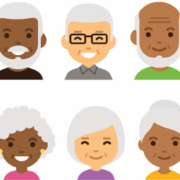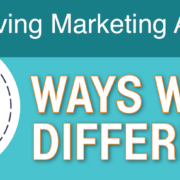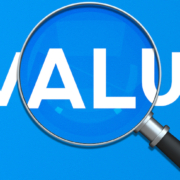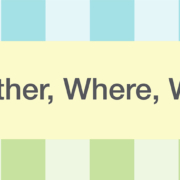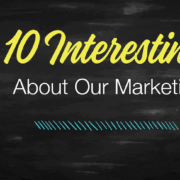6 Signs You Need a Senior Living Lead Generation Agency
Are you taking stock of your marketing efforts and wondering if you should work with a senior living lead generation agency? Here are six signs that suggest this would indeed be a wise decision for your community.
Sign #1: You haven’t developed formal buyer personas.
Many communities might have informal buyer personas—the ones based on hunches. But hunches can only get you so far. Not to mention, hunches are often wrong. Remember, you can’t generate more of the right leads if you don’t know what the “right” lead even looks like for your community.
- How an agency can help: Persona development takes time and effort. But a good agency with expertise in senior living should be able to develop these personas in a reasonable amount of time. And better yet—a good agency will know how to use them.
Sign #2: Your website doesn’t speak to your various personas.
This could be because you don’t have formal personas, as noted above. Or it could be because the senior living website simply wasn’t built to communicate to different audiences. Each persona should follow its own path and journey with custom content designed specifically for them.
For example, the adult child shopping for her mom with Alzheimer’s disease is going to need different content and nurturing than the married couple looking for independent living as they approach retirement.
Keep in mind that buyer journeys aren’t linear. As much as we’d all like a website visitor to enter on a specific page and follow things in the order we dictate, the reality is that buyers enter on various pages and jump around. The goal is to enable prospects to take the next step that will make sense for them (even if the step isn’t the one you’ve envisioned).
- How an agency can help: The key is making sure your site has clear navigation that speaks to your core personas. An agency with a good website design team can ensure you have exactly that across all devices—desktops, tablets, and phones.
Sign #3: You don’t have a reliable system in place for scoring and segmenting leads.
Not having a way to score and segment leads is like inviting everyone to the party at your house, but not having someone to greet people at the door and direct them to where they should go next. Maybe one guest needs to use the restroom while another is hungry and would like to know where the buffet table is.
Think of your website as the party destination, and each website visitor is a party guest with a specific need. Not all needs will be the same, either. Some folks are just starting their journey into senior living while others might need to make a decision ASAP for their parent.
- How an agency can help: This is where the best agencies shine. They don’t simply make things look pretty. (Don’t get us wrong; aesthetics matter.) But a good lead gen agency understands that the only way you can effectively “work” the leads coming in is to score and segment them appropriately. Marketing-qualified leads (MQLs) will continue to be nurtured according to who they are. On the other hand, the sales-qualified leads (SQLs) will be served to the sales team for follow-up.
Sign #4: You don’t have marketing automation.
Or if you do have it, you haven’t used it or you’re not maximizing its full potential. Our industry has been slow to get on board the marketing automation bandwagon. We’re finding that most communities have an understanding of what it is—and why it’s necessary. The challenge? Not all marketing automation is created equal. And marketing automation doesn’t set itself up—someone needs to direct things.
- How an agency can help: The best senior living marketing agencies know marketing automation inside and out—what product or product level will make sense for your community and how to set it up so you get the biggest bang for your marketing buck.
Sign #5: You don’t have custom lead nurturing campaigns.
Marketing automation sends the right content to the right person at the right time. But who’s responsible for creating the ‘right‘ content? Great content doesn’t write itself. Understanding your buyer personas is the first critical step. Then, you need to develop content that satisfies their needs.
- How an agency can help: Great agencies usually have great writers who can draft content that delights and converts. Now, we’re not going to lie: Content creation is an investment. But it’s money well spent. Unless you have a naturally gifted writer in-house, it makes sense to outsource this work to an agency.
Sign #6: You’re not getting the results you want despite having personas, automation, and lead scoring.
Even the best senior living marketing and sales teams need help from time to time. Getting a fresh set of eyes on your lead generation efforts can make all the difference in the world. There’s no shame in that.
- How an agency can help: A good agency won’t make you commit to long-term contracts or take forever to get back to you. The best agencies want to help you succeed. The key is working with an agency that understands senior living and the sales cycle for different senior living lifestyles. A good agency should also be able to evaluate your current setup, monitor results, and adjust accordingly.
Ready to work with a senior living lead generation agency? Let’s talk.
We know senior living. We know marketing. And we know how to help communities design strategies to boost their lead-gen efforts. Get in touch and let’s chat.




